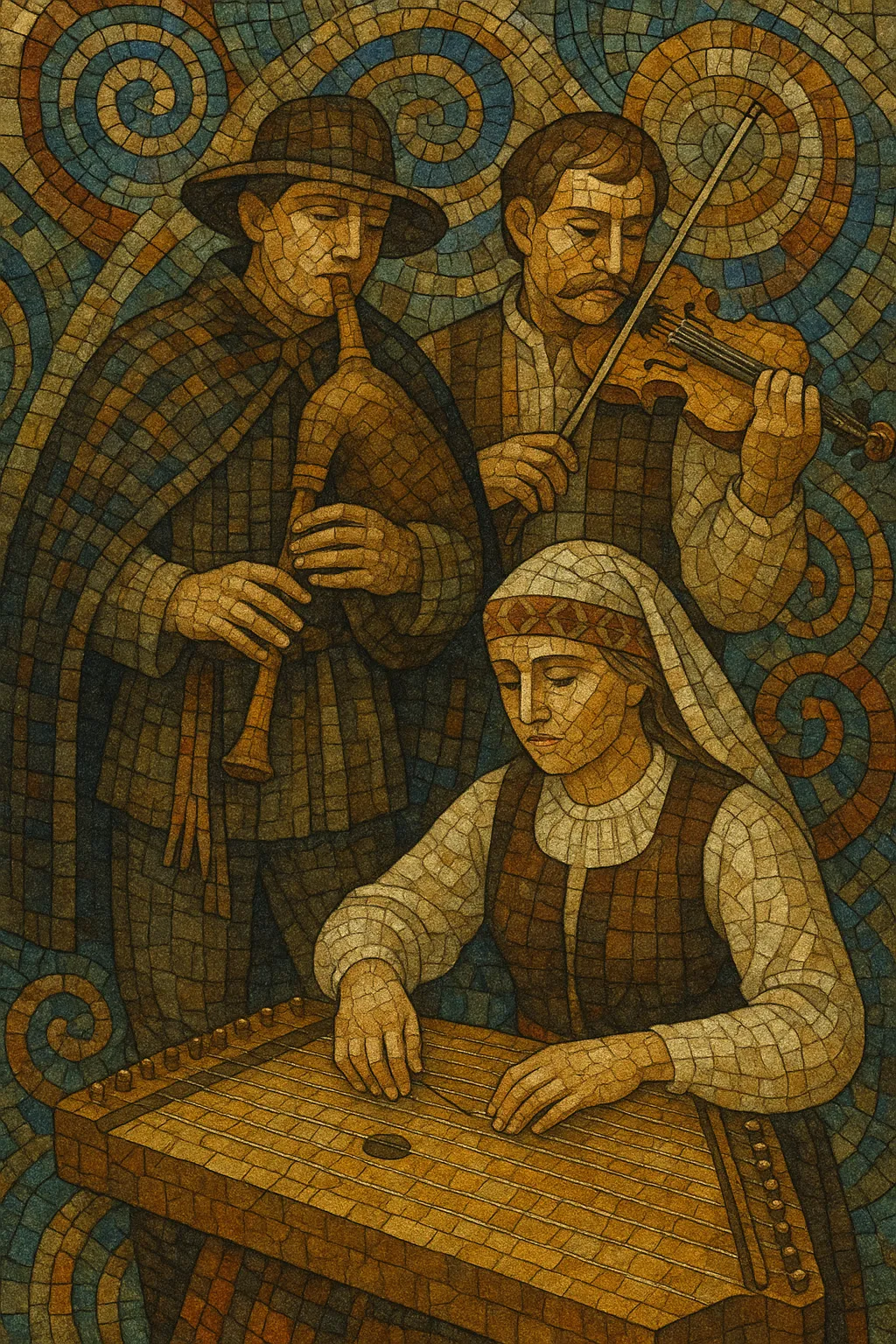Baltic folk music refers to the traditional and revivalist musics of the Baltic region, primarily Lithuania and Latvia (Baltic language cultures), and often extending to Estonia (a Finnic culture within the Baltic states). It encompasses ancient vocal traditions, ritual song repertoires tied to the calendar year, and a wide variety of dance tunes that absorbed Central and Northern European influences in the 19th century.
Characteristic elements include narrow-range, modal melodies; drones and heterophony; strophic poetic forms with dense alliteration; and multipart singing traditions such as Lithuanian sutartinės and Estonian regilaul (runo songs). Iconic instruments are the regional box zithers (kanklės in Lithuania, kokle in Latvia, kannel in Estonia), as well as birbynė (reed), skudučiai (panpipes), torupill (Estonian bagpipe), fiddle, and accordion. The genre also thrives in powerful choral traditions and large-scale Song and Dance Festivals that underscore communal identity and continuity.
Baltic folk music draws on pre-Christian ritual song, work-song, and lament traditions that survived in rural communities. Core layers include Lithuanian sutartinės (UNESCO-recognized multipart singing with hocket-like textures) and Estonian regilaul (runo songs), as well as Latvian dainas with tightly structured, alliterative couplets.
In the 1800s, scholarly collecting (songbooks, field notes) and the rise of national movements codified local repertoires as symbols of identity. Western dance forms like the polka, waltz, and mazurka were adapted into village ensembles, while traditional zithers (kanklės/kokle/kannel) and emerging instruments (fiddle, accordion) shaped dance bands. Public song festivals began to link folk repertory, choral singing, and nation-building.
Between the World Wars and under Soviet rule, Baltic folk music was institutionalized through state ensembles and folklore troupes. While professionalization preserved many tunes, it also standardized styles and staged them for propaganda. Nevertheless, community practice and home repertoires continued, and ethnomusicologists recorded vast archives of songs, instruments, and performance practices.
After 1991, Baltic states saw a grassroots revival emphasizing local languages, regional styles, and historically informed performance. Young artists fused folk with rock, ambient, and metal, while large Song and Dance Festivals reaffirmed collective memory. Contemporary bands foreground ancient modalities, traditional instruments, and ritual themes, bridging village roots and global stages.
Today, Baltic folk informs neo-pagan folk, folk metal, and world-fusion scenes. Artists experiment with drones, extended vocal techniques, and electronic textures while retaining poetic meters, modal scales, and communal call-and-response. International collaborations have amplified Baltic sounds in festivals and film, keeping the tradition dynamic and evolving.


